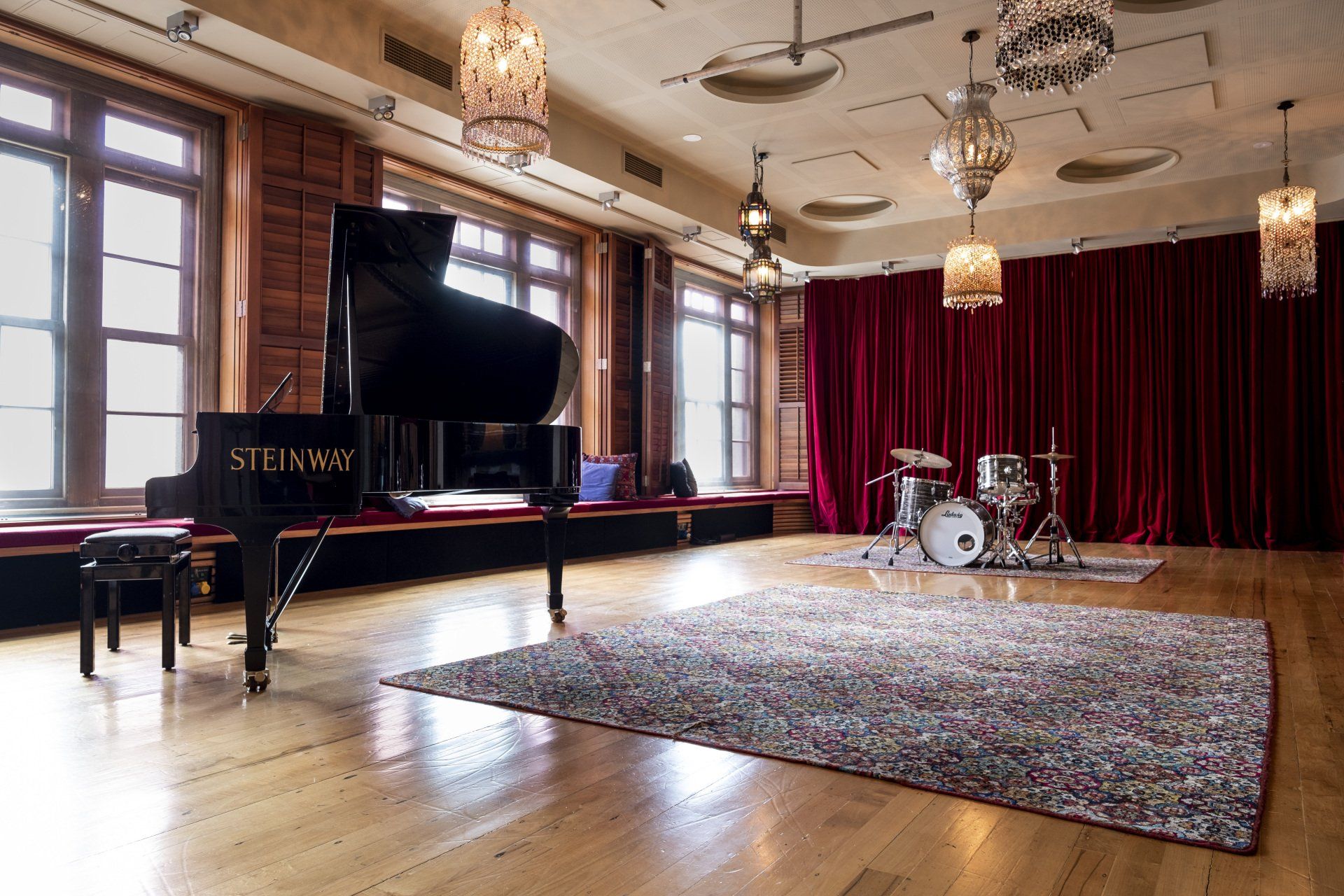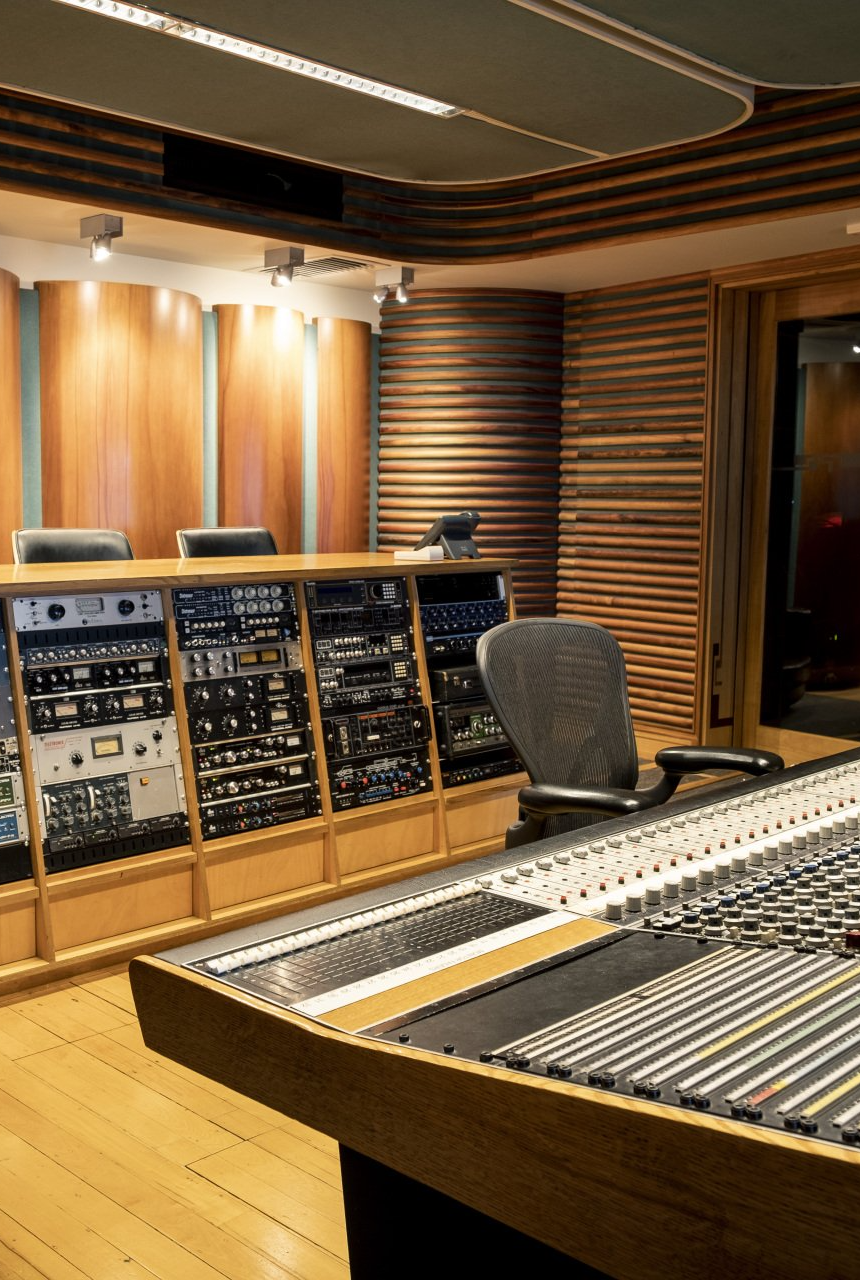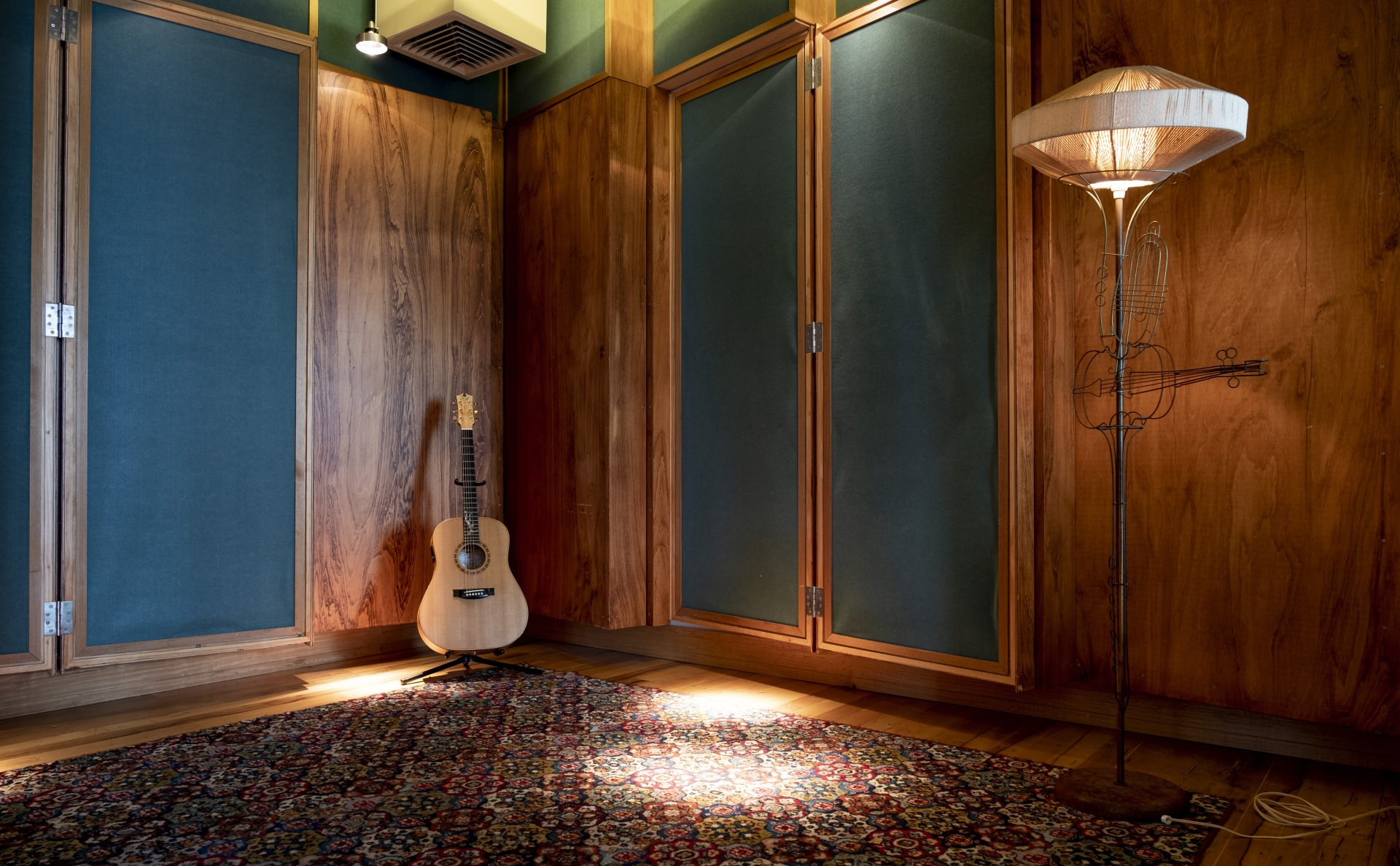
Reinvented - Roundhead Studios design brings music to Uptown
Words: Russell Brown
The green building on the corner of Newton Road and Dundonald Street has been part of the Uptown story for nearly a century. Constructed as the headquarters of the Fountain of Friendship Lodge, it provided medical and social services to Aucklanders for decades from 1928.
It's still a familiar sight today. What you can't see from the outside is how the old lodge building was reinvented to become Roundhead Studios, a world-class recording facility praised by international artists as one of the best.
Neil Finn bought the building in 2003 and opened its doors as Roundhead in 2008. Over those five years, from original drawings by American studio design legend George Augspurger, it took a village to realise the dream – and one of the key people in the mix was acoustic designer Chris Day.
"It's one of the ones we're really proud of," says Chris, whose company Marshall Day, based nearby on Symonds Street, has fitted out major concert halls around the world and the edit suites at Peter Jackson's Park Road Post. "I always like coming here."
One of the things that makes Roundhead different to most recording studios – and much more welcoming – is that daylight reaches into it.
"Neil felt he'd spent his life in dark, dingy basement studios with no natural light and one of the things he loved about this building was the potential to have light in the studio," says Chris, gesturing around the main recording room. "That's why the windows are still there."
But they're not just any windows. The original frames and panes of the room were kept and sealed and interior panes of heavy acoustic glass were fitted, with a large air gap between. They let in the light and keep out the noise and vibration from the busy road outside.
Chris points out various other features of the room that make it acoustically optimised. Heavy red velvet curtains help dampen any echoes. For a different and more "live" sound, they can be pulled back to reveal smooth wooden half-cylinders that act as sound diffusers.
Several internal walls are curved for the same reason. The built-in seating is stuffed with "acoustic fuzz" and helps absorb low bass frequencies. The carpets on the floor and the perforated plaster ceiling also have an acoustic role to play and the beautiful (and very heavy) solid Fijian kauri doors help seal out any external noise.
The acoustic design extends to the studio control room, where the slats on the walls are spaced according to a mathematical pattern. Like many of Roundhead's features, they're not only functional but attractive. But the visible features are far from all that's going on here.
151 is, says Chris, "an inherently solid masonry building", but in order to fully isolate the studio it was necessary to create "a room within a room". Between the main studio and the smaller Brick Room studio below it is a 100mm thick concrete pad floating on rubber mounts.
"And then the whole studio is built on top of that floating structure. The main studio is also floated separately to its control room. There's nothing touching between the two of them, so you can't get structural sound transmission."
Getting that right was the job of Jason Dempsey, who has his own company, Flathead Design, but has also been Neil and Sharon Finn's go-to builder for years. He's known Neil since the early 1990s, when he was a musician in the band These Wilding Ways, and came aboard after the initial builder hadn't worked out.
"Jason understood from early on what we were on about," says Chris, "and that's the key to getting one of these things built properly."
Jason has a reputation as a designer who doesn't mind getting his hands dirty, but the internal concrete pour must have been nerve-racking. You only get to do that once, right?
"You only really want to do it once!" Jason grins. "But the main thing is just keeping it moving. There were so many factors, cantilevered bits, rooms within rooms. And then just understanding the old building, showing it respect, taking your time and doing the right thing."
Above the main studio is a self-contained apartment, where guests, and sometimes Neil and Sharon themselves, can stay. The building also houses a space donated to Cloud Workshop, which works with bereaved children through the medium of art, and of course, Sharondelier, the studio and (sometimes) shop where Sharon crafts chandeliers, decorative birdcages and jewellery.
A number of the chandeliers have made their way up to the main room, where they play their role in creating the room's unique atmosphere – but what about the acoustics?
"Everyone was bit worried about that," admits Chris. "Whether at high level they would start jangling. And we said, well, there's no theory about it, let's try them and see how it goes."
It turns out that the chandeliers, like most things at Roundhead, go very well.


Roundhead Studios
Share Their Story

